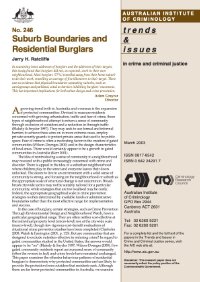By Pat Mayhew
This analysis looks at residential burglary as measured in the United States, Canada, England, and Wales, drawing principally on 1980's data derived from the U.S. National Crime Survey, and the British Crime Survey (which covers both England and Wales).
Among other cross-cultural burglary comparisons, the report presents findings showing U.S. householders to be more vulnerable to burglary than householders in either Canada or England and Wales. In addition to these substantive comparisons, the study focused major attention on methodological procedures required for comparing data gathered by surveys whose designs are substantially different. To improve comparability, the author 'reanalyzed' survey data to take account of five differences in the ways the surveys dealt with burglary data (differences in hierarchical classification procedures, series counting, types of property covered, respondent eligibility for reporting household crimes, and treatment of no-force attempts). The reanalysis process required to adjust for each of these differences is described. The study also made 'softer' adjustments, based on methodological literature, to moderate the effects of seven remaining differences for which more precise corrections through reanalysis were not possible. Finally, levels of burglary offenses recorded by the police were compared with the adjusted survey results for each country to determine which index provided the better measure of crime for cross-cultural analyses. The study concluded that adjusted survey rates -- though not without limitation -- permitted more accurate cross-cultural comparisons, due to incomparabilities in crime reporting and recording practices affecting police rate comparisons among the three countries. Footnotes, tables, figures, references, and appendixes.
Washington, DC: U.S. Department of Justice, 1987. 63p.





















